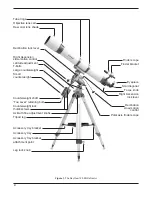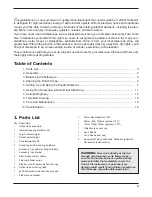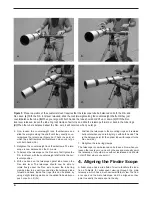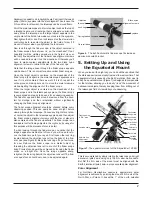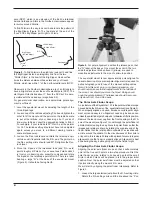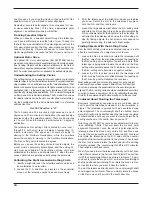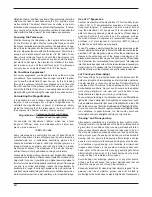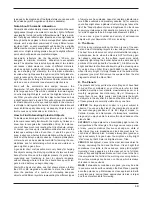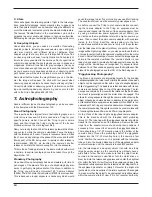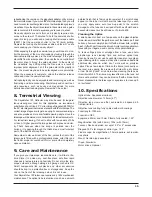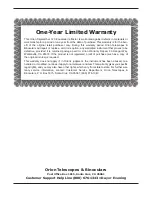
6
2. Now loosen the counterweight lock thumbscrews and
slide the weights along the shaft until they exactly coun-
terbalance the telescope (Figure 5a) That’s the point at
which the shaft remains horizontal even when you let go
with both hands (5b).
3. Retighten the counterweight lock thumbscrews. The tele-
scope is now balanced on the R.A. axis.
4. To balance the telescope on the Dec. axis, first tighten the
R.A. lock lever, with the counterweight shaft still in the hor-
izontal position.
5. With one hand on the telescope optical tube, loosen the
Dec. lock lever. The telescope should now be able to
rotate freely about the Dec. axis. Loosen the tube ring
clamps a few turns, until you can slide the telescope tube
forward and back inside the rings (this can be aided by
using a slight twisting motion on the optical tube while you
push or pull on it) (5c).
6. Position the telescope in the mounting rings so it remains
horizontal when you carefully let go with both hands. This
is the balance point for the optical tube with respect to the
Dec. axis (5d).
7. Retighten the tube ring clamps.
The telescope is now balanced on both axes. Now when you
loosen the lock lever on one or both axes and manually point
the telescope, it should move without resistance and should
not drift from where you point it.
4. Aligning the Finder Scope
A finder scope has a wide field of view to facilitate the loca-
tion of objects for subsequent viewing through the main
telescope, which has a much narrower field of view. The find-
er scope and the main telescope must be aligned so they
point to exactly the same spot in the sky.
Figure 5. Proper operation of the equatorial mount requires that the telescope tube be balanced on both the R.A. and
Dec. axes. (a) With the R.A. lock lever released, slide the counterweights along the counterweight shaft until they just
counterbalance the tube. (b) When you let go with both hands, the tube should not drift up or down. (c) With the Dec.
lock lever released, loosen the tube ring lock clamps a few turns and slide the telescope forward or back in the tube rings.
(d) When the tube is balanced about the Dec. axis, it will not move when you let go.
a.
c.
d.
b.


